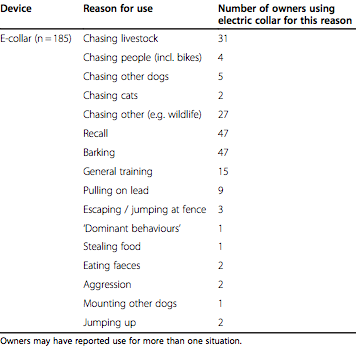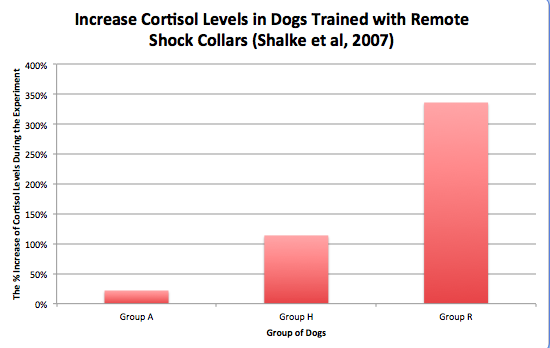A survey conducted by Blackwell et al. (2012) found the following were the most common reasons for why dog owners chose to use shock collars as a training tool for their dogs in England in 2012:
Schalke et al. (2006) measured salivary cortisol levels to determine the intensity of stress signs arising from the use of shock collars. It was discovered that dogs showed severe and persistent stress symptoms from poorly timed applications of high electric pulses.
Below is a table from the Schalke et al. (2006) with descriptions on how dogs were seperated in this study to measure the effect of predictability and control of electric shock:
Graph made by Devon Edwards using data from Schalke et al. (2006)
As you can see all dogs had increased cortisol levels during training (all dogs were stressed). However, dogs that had the greatest ability to control the shock showed less stress symptoms than dogs that had to experience random, uncontrollable shocks. Note: The majority of remote collars users do not have the skill to determine the correct time to shock their dog during training. Therefore, many domestic dogs could show a similar increase in cortisol levels as Group R (a significant welfare problem).
Schilder et al. (2004) observed the following reactions immediately following a shock in canine police training of German shepherds:
In scitenfic literature, these observations are connected to pain, fear and/or submission.
Schilder et al. (2004) also found that dogs in police training were shocked at incorrect times which resulted in the dogs making undesired associations with the shock. Shocked dogs connected their handler with getting shocked.
A police dog and his handler. TEST YOUR UNDERSTANDING: Name the stress response that the dog in this photo is displaying. Hint: it is the most common immediate reaction to shock in the Schilder et al (2004) study.
Answer: Lowered ear position






